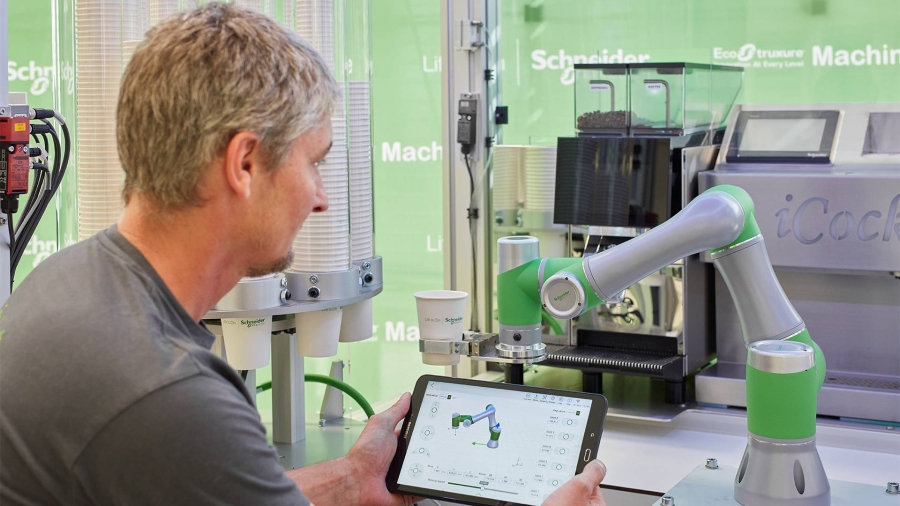
Artificial Intelligence (AI): A branch of computer science that uses computer systems or machines that mimic human intelligence to perform tasks and then progressively improve based on knowledge gained over time.
Augmented Reality (AR): Technology used to create an enhanced version of reality to overlay digital information on an image of something being viewed through a device.
Born-digital company: An organization founded after 1995, whose operating models and capabilities are based on the internet and digital technologies as a core competency.
Circularity: An economic model where systems, procedures, facilities, and practices are created and managed to continue indefinitely, without exhausting natural resources.
Cybersecurity: Measures taken to protect computer systems against unauthorized access or harm.
Data engineer: Person responsible for designing and building data pipelines and systems to aggregate and integrate information from different sources at scale to enable data-driven decision making.
Decarbonization: The removal of carbon and carbon dioxide (CO₂) emissions from production with a process or technology.
Digital backbone: An enterprise-wide architecture that manages the storage, aggregation, analysis, and provision of data across the organization.
Digital Native: A person who grew up in the era of information technology. Includes Generation X, Millennials, Generation Z, and Generation Alpha.
Digital transformation: Integrating digital technologies and solutions into all areas of a business to improve efficiency, value, agility, sustainability, innovation, and competitiveness.
Digital twin: A virtual representation of real-world objects and systems created from real-time data, simulation, and artificial intelligence.
Eco-efficient: Optimizing the efficiency of an operation for sustainability by reducing resource use and environmental impact.
eCommerce: Buying and selling goods and services via the Internet.
Engineering Technology (ET): The tools and technologies used by engineers to provide scientific and mathematical knowledge and best practices in the design of new products, processes, and solutions.
Federated data: Data stored in a heterogeneous set of autonomous data repositories that is made accessible to others as one integrated data store with on-demand data integration.
Industrial cloud platform: Enables on-demand delivery of computing services over the Internet (“the cloud”). Industrial cloud platforms are heavily customized to fit a specific industry in order to accommodate the business, operational, legal, regulatory, and security of the business.
Industrial internet of things (IIOT): The use of Internet of Things technology (connected machines, devices, and sensors) in industrial applications.
Industry 4.0: The fourth industrial revolution, which is associated with the rise of automated systems and data exchange technology within manufacturing industries.
Industry 5.0: The fifth industrial revolution, which is associated with the expansion of technology to augment and enhance human capabilities and safety in the next generation workforce.
Information Technology (IT): The technology involving the development, maintenance, and use of computer systems, software, and networks for the processing and distribution of data.
Mixed realities: A technology that blends physical reality and the digital world closely together.
Operations Technology (OT): Programmable systems or devices that interact with the physical environment to monitor and control industrial equipment, assets, processes and events.
Predictive analytics: Using artificial intelligence, data, and advanced analytics to forecast future scenarios.
Prescriptive analytics: Using artificial intelligence, data, and advanced analytics to determine the best course of action and provide recommendations to achieve a desired outcome.
Risk threshold: The risk-bearing capacity of an individual or organization. Risk assessment: The process of analyzing potential events that may result in loss.
Risk assessment: The process of analyzing potential events that may result in loss.
Risk management: The process of identifying, assessing, and controlling threats to an organization’s capital and earnings.
Single source of truth: Data warehousing with either a single centralized database, or distributed synchronized databases, which stores all of an organization’s data in a consistent and non-redundant form.
Six Sigma: A data-driven methodology using statistical analysis to reduce errors or defects in products and processes. Six Sigma quality means 3.4 defects or less per million opportunities. Six Sigma views all work as processes that can be defined, measured, analyzed, improved, and controlled.
Software-as-a-service (SaaS): Applications delivered over the internet via a subscription model to provide easy and fast updates, scaling, and consistent costs.
Time to Value (TTV): Measurement of the time it takes from purchasing a product/service to begin realizing benefits and start deriving value.
Universal automation: The world of plug-and-produce automation software components based on the IEC 61499 standard that solve specific problems in a proven way. Think of an “app store” for industry.
Virtual Reality (VR): An artificial environment that is experienced through sensory stimuli (e.g., sight and sound) provided by a computer, where the user’s actions partially determine what happens in the environment.












